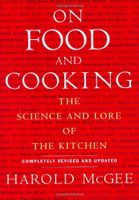Advertisement
The Importance of Fat Content
By Harold McGee
Published 2004

Fat globules in milk and cream. Left to right: Fat globules in homogenized milk (3.5% fat), and in unhomogenized light cream (20% fat), and in heavy cream (40% fat). The more numerous fat globules in cream interfere with the flow of the surrounding fluid and give cream its full-bodied consistency.
Cream is manufactured with a number of different fat levels and consistencies, each for particular purposes. Light creams are poured into coffee or onto fruit; heavy creams are whipped or used to thicken sauces; clotted or “plastic” creams are spread onto breads, pastries, or fruit. The proportion of fat determines both a cream’s consistency and its versatility. Heavy cream can be diluted with milk to approximate light cream, or whipped to make a spreadable semisolid. Light cream and half-and-half contain insufficient numbers of fat globules to stabilize a whipped foam, or to resist curdling in a sauce. Whipping cream, at between 30 and 40% fat, is the most versatile formulation.


